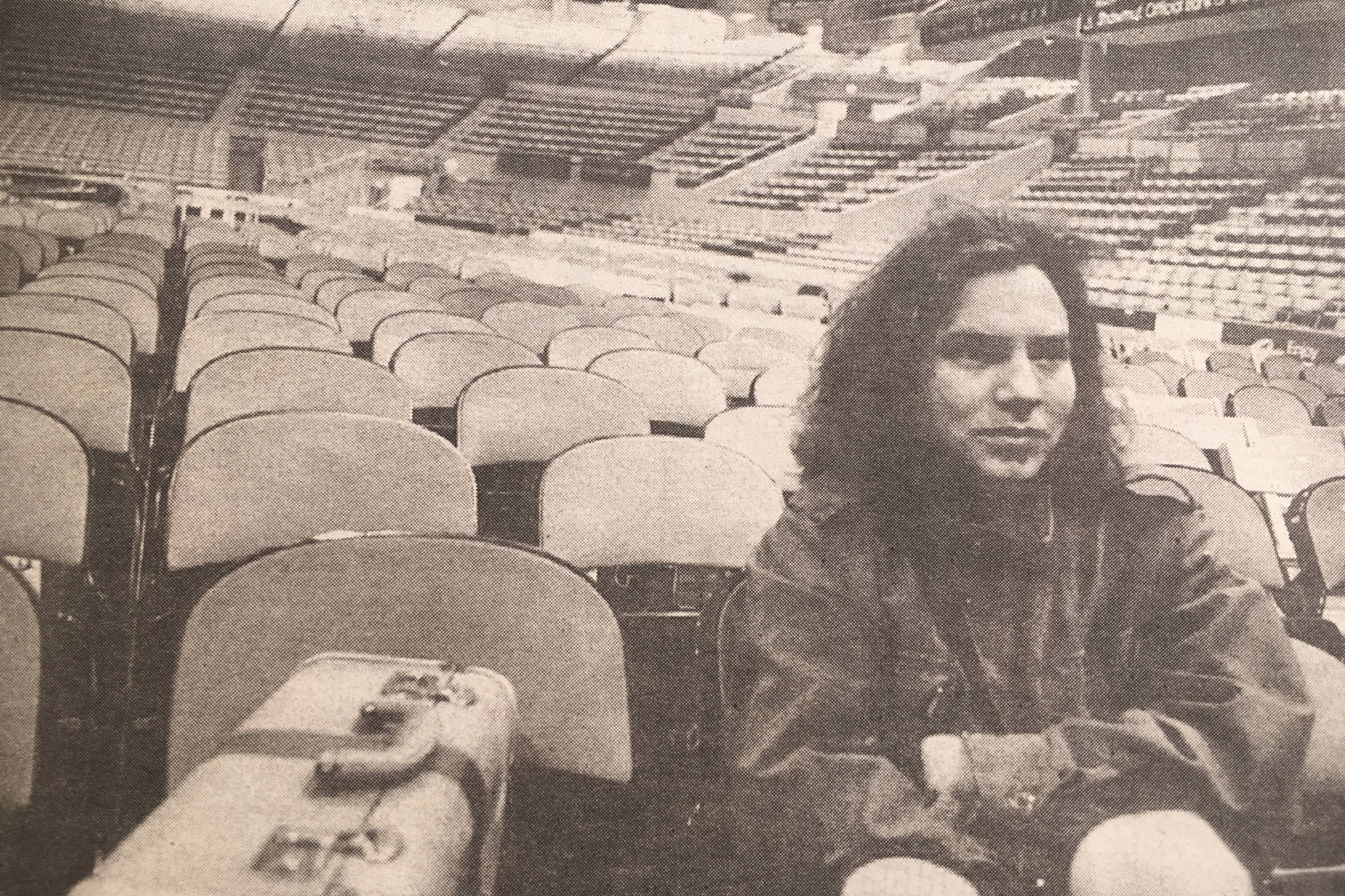BACK BEFORE LOCAL POLITICAL leadership crumpled, inevitably, under Major League Baseball’s onslaught, thenKing County Council member Ron Sims made a telling observation about the relationship between sports and politics: “If the Mariners weren’t winning, we wouldn’t even be thinking about this.” Sims was referring to the team’s improbable come-from-behind run to its first-ever postseason playoff spot, and that saga’s role in forcing the council to help fund construction of a new baseball stadium.
Now, two years and one reversal of team fortunes later, another Quote from Seasons Past seems immeasurably more appropriate: “When you’re winning,” Frank Funk, a Mariners pitching coach, once said, “everything is fabulous. But when you’re losing, everything turns to shit.”
The contending team for which smitten voters are buying a new ballpark is now in midcollapse, with its restoration to competitive form a far more long-term and costly project than the new ballpark. After insisting for years that it needed the new park and its revenue streams in order to be competitive, Mariner ownership now has given up the competitive battle, letting limits on team budget and owner imagination gut the franchise. With a porous defense, helpless bullpen, weak starting staff, and pitching ace Randy Johnson on undeclared strike and bound for glory elsewhere next season, the Mariners have all the hallmarks of a team at the beginning of a yearslong decline both on the field and in the box office.
As of this writing, the team picked to win the American League West is dead last in the division and 11th in the 14-team American League. The Mariners have a 31-44 record, having lost 26 of their last 38 games. They lead the American League in errors. The best thing the team has going for it is Safeco Field—the splendid new park going up across Royal Brougham Way from the Kingdome—and that project is starting to shape up as a financial disaster even worse than Randy Johnson’s contract.
WHILE TEAM OFFICIALS ARE MUM about sales of season tickets, luxury suites, charter-seat licenses, and club seats in the stadium-to-be, word in the vaunted “business community”—the constituency expected to send cash cascading down all those new revenue streams—is grim. “This whole deal was put together in this great, great winning frenzy,” says one local businessman with longstanding ties to the Mariners. (Considered by the team to be a sure purchaser of a luxury suite, he turned it down.) “But this town has never shown it will support a loser, ever. If you’re selling seats and the town turns on you, you’ve got a tough road.”
Meanwhile, construction of Safeco Field is now running $32 million over budget, with the Mariners contracted to pay all overruns after $25 million (believe it when it happens). Shelley Yapp, who quit the Public Facilities District overseeing the ballpark and its lease to the Mariners when she realized it had no real authority, predicts the overruns will hit $70 million by project’s end. Factor in baseball’s soaring labor costs and you have a Mariner future that looks exactly like the past the new stadium was supposed to eradicate—one in which Seattle loses all its best players to more lucrative markets, and fields losing teams while blaming the local populace for being insufficiently supportive.
Conversations with business figures—some of whom have co-promotion contracts with the Mariners, and none of whom want to be identified—paint a dire financial picture for the ball club. “The general feeling in the business community,” says one, “is that people really scrutinize the entertainment dollars they are spending now.”
The scrutiny in Seattle is causing stadium revenue streams to dry up before they are tapped. The prevailing attitude among business leaders charged with spending promotional money is that pro sports is a bad buy because it is turning into an ever-more-expensive way to reach an ever-smaller group of people. Pepsi-Cola, for example, no longer advertises in KeyArena because the Seattle SuperSonics have priced themselves out of the Pepsi demographic. “Sonic games,” says one Pepsi executive, “attract white Eastsiders who make $100,000 per year and have 1.2 kids per household. The average person slugging down Mountain Dew or Pepsi doesn’t make $100,000 per year. You advertise in there and you’re reaching the same 10,000 people all year. You can get a much better cross-section almost anywhere else.”
The Mariners are running into similar resistance from local businesses over their Safeco Field luxury boxes, which run from $75,000 to $145,000 per season, with 16 to 18 seats in each box. The problem, as predicted by the 1995 King County Executive Task Force on Stadium Alternatives, is that Seattle lacks enough large companies (defined as those with 500 or more employees) to supply customers to three pro sports venues peddling luxury suites. As one local exec puts it, “We decided not to buy one because we can’t come close to getting enough use out of it to justify the cost. There’s not only the cost of leasing them, but the cost of catering, which you have to do 81 times a year. And sometimes a homestand is so long that you’re hosting a party four, five, eight times in a 12-day period. You find yourself spending three grand to entertain 30 people. It’s really hard in a business community this size to make use of something like that. By the time you run through all your top customers, you still have 60 games left.”
Even Pepsi’s Seattle office, which has pouring rights in the new Mariners ballpark, unexpectedly rejected the ball club’s suite sales pitch. If you can’t sell to the local company with the longest-standing co-promotional ties to your franchise, who can you sell to?
The problem with the Mariners’ new-ballpark gambit from the beginning has been that it was based on a set of impossibly optimistic assumptions. For the ballfield to pencil out, Major League Baseball had to solve its labor problem; Seattle had to attract fans in unprecedented numbers, win or lose; the Mariners had to sell out all their premium seats and suites forever; broadcasting contracts had to increase almost tenfold in value; and the team had to build a stadium under an impossible deadline, to an unspecified and unprecedented design, on time and under budget.
Oh, well.
As for what lies ahead, it is hard to conjure up a rosy scenario out of a combination of poor premium-ticket sales, a $45 million to $50 million stadium construction debt, franchise management committed to a player-salary budget too low to allow it to be competitive, and a local population that will stay away from the ballpark once the novelty of outdoor baseball wears off. One daunting note, for those trying to handicap the future of baseball in Seattle: During lease negotiations with the Public Facilities District, the Mariners refused to close a loophole in the lease allowing them to declare bankruptcy and bail out on their commitments to the region. As the revenue streams start flooding the franchise in red ink next season, it will be ever easier to see why.






